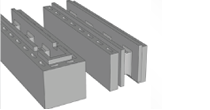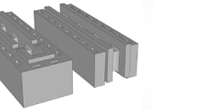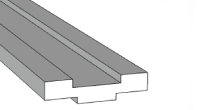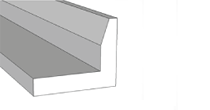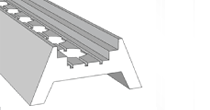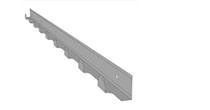U-value
U-value or envelope’s thermal transmittance (as structural feature, also called thermal conductivity); W/(m2•K)
U-value is a structural feature that expresses thermal flow (summative: thermal conductivity + convection + radiance) in Watts through a structure with area of 1 m2, if temperature difference between the different environments is 1 K;
The building envelope must be long-term air permeable and sufficiently insulated. An expedient insulation for a building is determined according to the requirements to the building’s energy efficiency, to the thermal comfort of the rooms and to the prevention of condensation and mold on thermal bridges, internal surfaces and structures.
The envelope’s thermal transmittance is calculated after the standard EVS-EN ISO 6946.
The principles for the calculation method for the envelope’s thermal transmittance are as follows:
- the thermal resistance for every thermally homogeneous layer in the envelope will be calcutated;
- the envelope’s total thermal resistance will be determinated by summarizing the thermal resistance for all single layers and surfaces;
- the envelope’s thermal transmittance will be calculated and it will be adjusted, taking into account the influence of mechanical fasteners, rainfall impact to jolt roofs, the impact of the specific air conductivity of ithe nsulation and the impact of the thermal bridges.
The envelope’s thermal transmittance, U, W/(m2×K) is calculated with a formula rounded to two numbers after the decimal point:

where:
RT the envelope’s total thermal resistance, (m2×K)/W. The sum of the envelope’s entire single layer’s calculated thermal resistance and internal and external surfaces’ thermal resistance; RT = Rsi + R1 + R2 + … + Rn + Rse, (m2×K)/W
where ;
R1; R2 thermal resistance, m2•K/W. A feature of a product of element with a certain thickness to obstruct thermal flow (generally via thermal conductivity) through the product or element (from surface to surface) in stationary conditions can be calculated from the formula:

where: d – the thickness of the material layer  – the material’s thermal conductivity
– the material’s thermal conductivity

